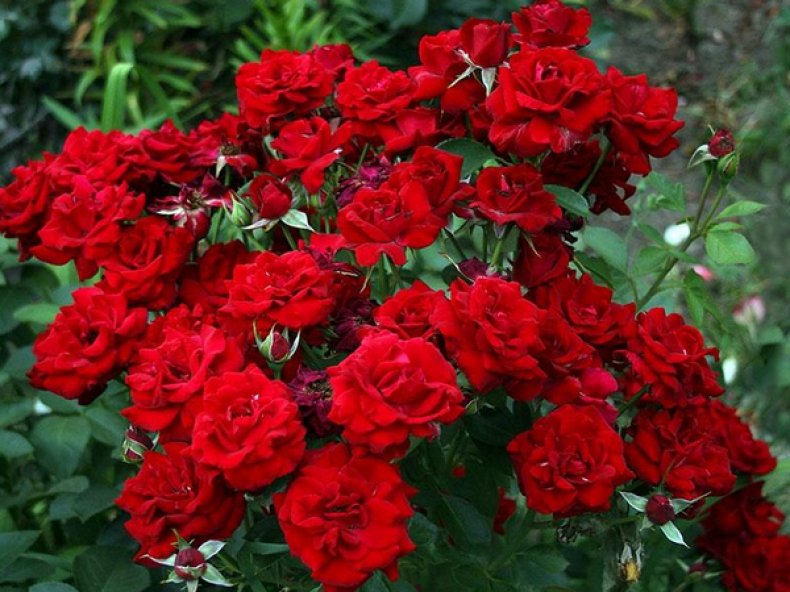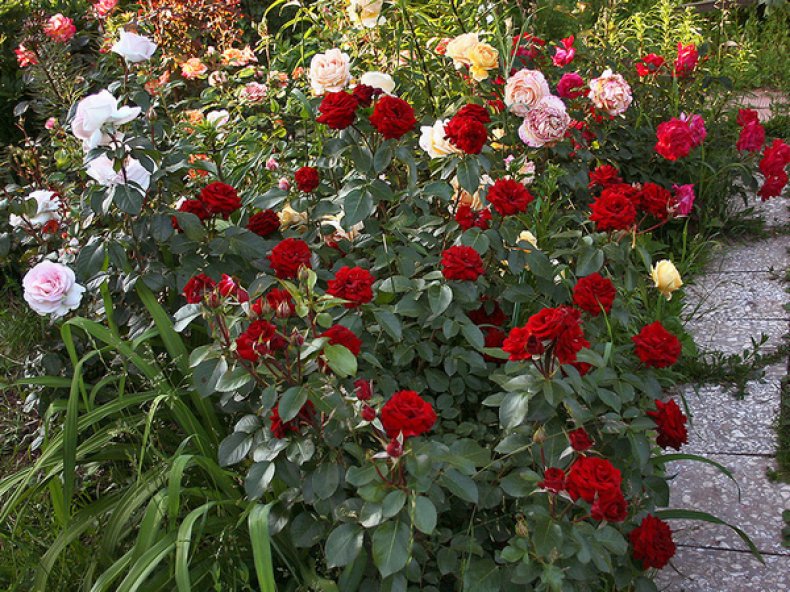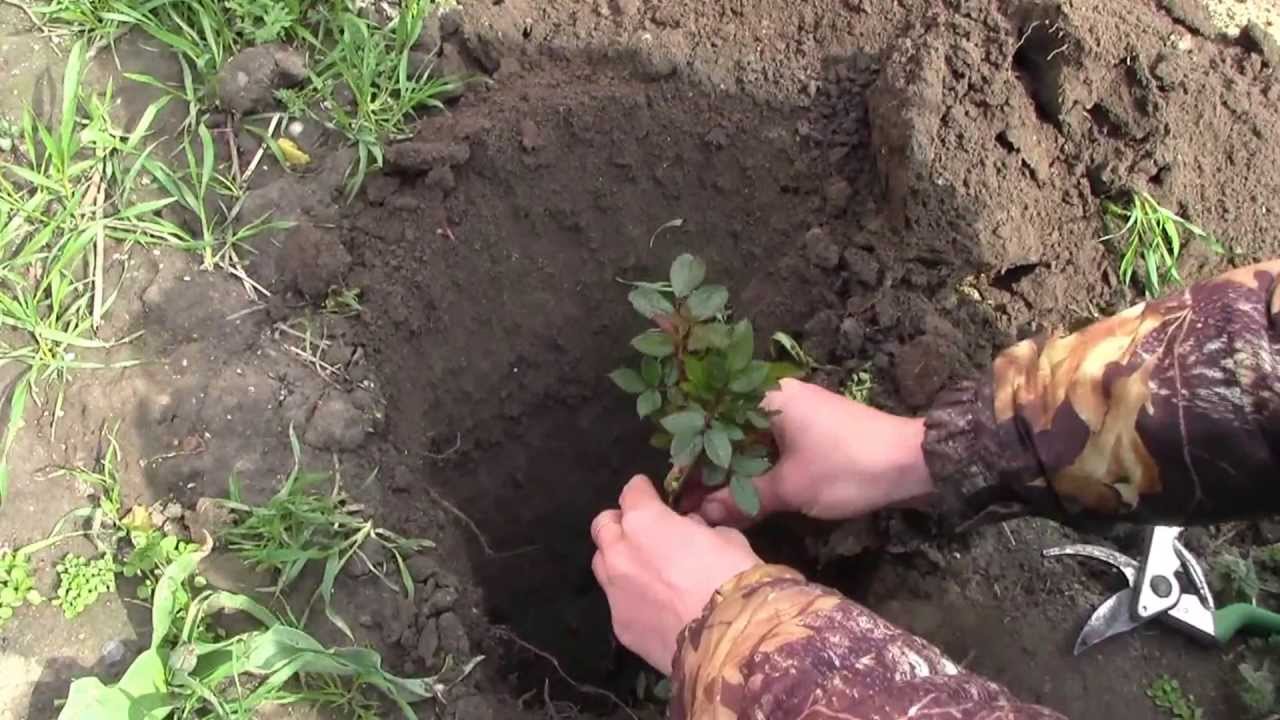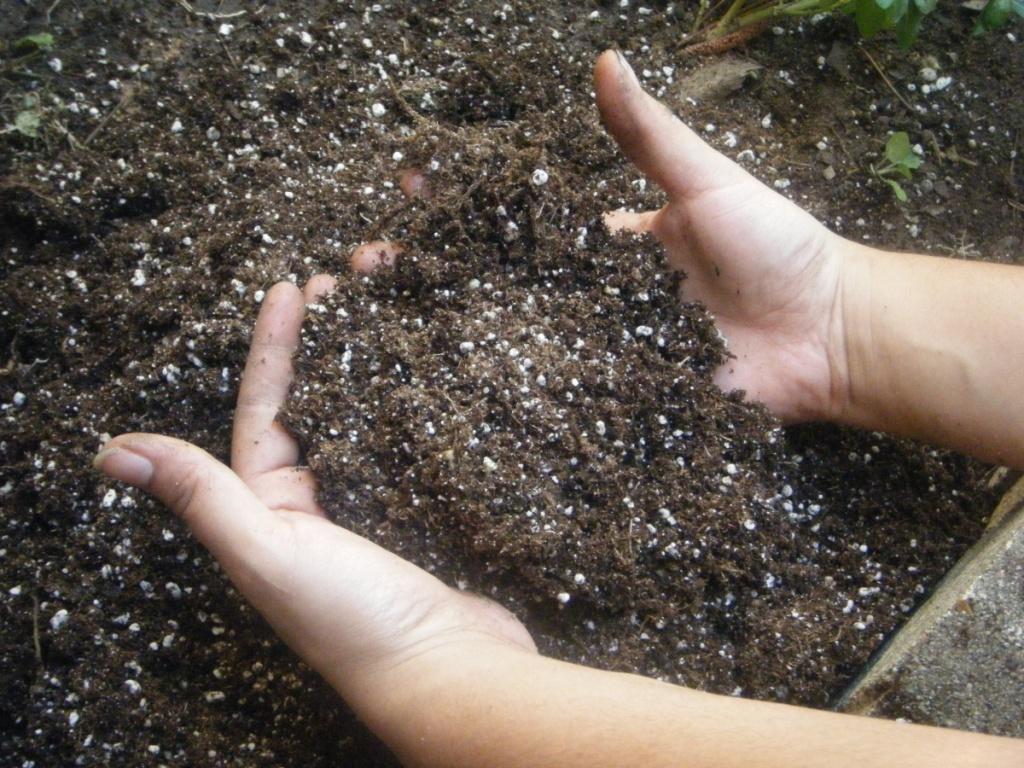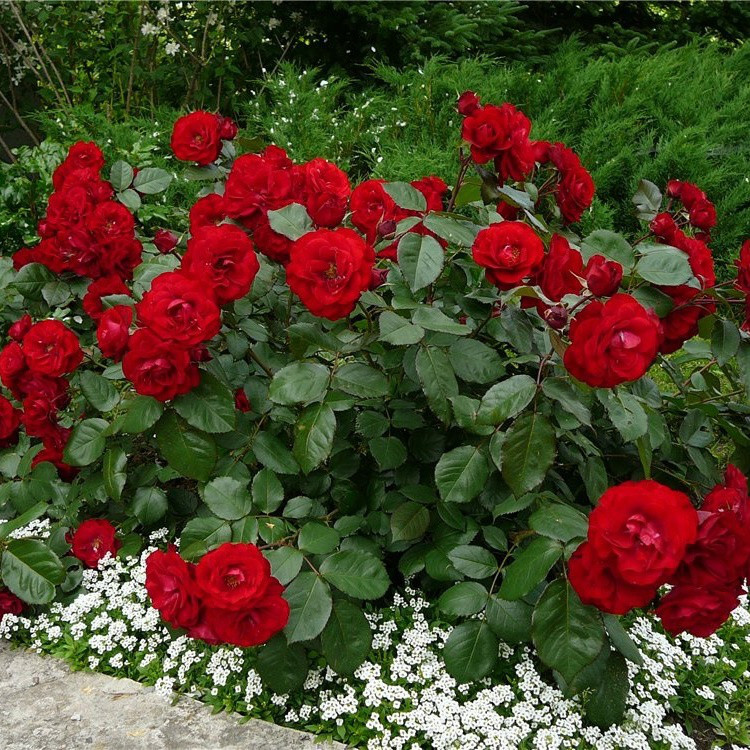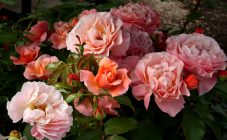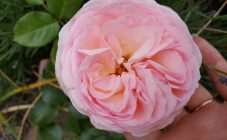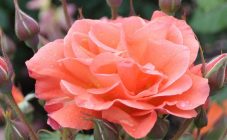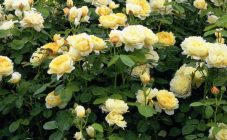Content:
Rosa Niccolo Paganini belongs to the Danish group called floribunda. Translated, this means "profuse flowering". Danish breeder Svend Poulsen has been breeding frost-resistant rose varieties for quite a long time, but he emphasized the beauty and long-term flowering of plants. The family of roses from Denmark, distinguished by a luxurious variety of varieties, was officially registered in 1952.
Description and features of flowers
The floribunda rose by Niccolo Paganini amazes with its catchy beauty, true classic splendor: short petals evoke associations with noble dark red velvet, and although the length of the petals is somewhat modest, the number and splendor of floribunda buds are impressive in the end. Roses are perfectly combined with rich green foliage.
In an inflorescence, you can usually see about six to twelve buds. The variety does not differ in high growth, its limit is 85 cm, and therefore, it is recommended to grow flowers in a flower bed.
This rose is hardy. But for high-quality wintering, this variety takes refuge from winter frosts as soon as the temperature drops to -10 degrees. The bush must be sprinkled and sprinkled with earth, having previously freed it from the remnants of inflorescences and leaves. The best cover is spruce branches, dense cellophane or leaves.
But with all this, the plant's exactingness to soil conditions is high. The best option is loam, the air should circulate well, and there should be plenty of humus. If the soil available on the site intended for planting floribunda does not include such qualities, it requires additional special substances.
Reproduction
The breeding methods of Niccolo Paganini are as follows:
- Cuttings. Lignified shoots are selected. Sections of them should be treated with a preparation containing phytohormones, shoots are placed in water for rooting. The length of the cutting is 8-10 cm. The upper part of the branch is cut at an angle of 90 degrees, and the lower one - 45 degrees. Immediately after the roots appear, the cuttings must be transplanted into the ground to a depth of 15 to 30 cm and covered with foil. The soil must be regularly watered, loosened and ventilated.
And after the plant takes root, it should be identified for a permanent place of growth.
- Reproduction by seeds. Floribunda seeds are soaked before planting. For this, a solution of hydrogen peroxide is used. Duration of soaking is 20 minutes, and it is done to avoid the development of mold. After the procedure, the seeds should be refrigerated. The contents require control, and if mold is suddenly noticed, it is necessary to re-treat with peroxide. The seeds will germinate in about a couple of months. They should be removed and sent to peat tablets or disposable cups. In order to prevent blackening of the stem, it is recommended to mulch with perlite. Rose of Paganini, grown by seeds, will not look like a mother bush. And this is the uniqueness of such reproduction.
- Reproduction by layering. This method is designed for early spring. The area near the bush is freed from weeds and sprinkled with peat. Further, a 10 cm depression is made at the stem, which is planned to be removed. You can use only one layer from one bush.Otherwise, the mother plant will be harmed.
- Budding. A rose is grafted onto a "donor" bush, and it immediately uses its root system. The breeding method is quite difficult.
Landing
To admire this wondrous rose all the time, it is worth planting the Niccolo Paganini floribunda rose in the most prominent area. It is recommended to plant flowers in a well-lit area, but too much heat is unacceptable for them. Therefore, landing on the south side is excluded, otherwise, at best, the floribunda will receive severe burns, at worst, it will die. If you plant a rose in a lowland, it will get sick from dampness and lack of sunlight.
The soil
Niccolo Paganini rose feels most at ease in loam or black soil. But if the rose is to be planted in loam, organic fertilizers must be added to it. The groundwater level should not be lower than 60 cm.
The acidity of the soil should not be ignored, because such conditions are most acceptable for a rose. This means that the soil should be fertilized with peat or manure. But if there is enough natural acidity, fertilizing the soil is not necessary. But if the acid level is exceeded, it can be extinguished using ash or lime for this.
Proper rose care
Constant attention to the rose and some simple agrotechnical actions are the key to the long beauty and health of flowers. What is floribunda care?
- Mulching and loosening the soil.
- Weeding.
- Weekly inspection of the bush for preventive purposes, namely, whether diseases or attacks of garden parasites are planned.
- Constant feeding and pruning.
The rose is fed during intensive growth. For this, trivial humus or fertilizers are used, the main substance of which is nitrogen.
Pruning and sheltering
Roses of this variety are cut in the spring when the buds swell.
If pruning is carried out in the summer, after flowering, you must remove the buds, all of them.
In the fall, only overgrown and affected branches are eliminated.
Spring pruning is an important stage. The fact is that it is at this time that the bush after wintering can be assessed more objectively.
There are several cropping methods:
- The pruning is strong. The bush at the base is trimmed so as to leave 2-4 buds on the shoots. Use this method if necessary to rejuvenate the old bush, as well as when planting seedlings.
- Medium pruning. According to the method, up to 7 buds should be retained. This promotes faster bud opening and guarantees good decorative properties of the bush.
- Pruning is weak. Those buds that have faded are removed. Shoots are only slightly trimmed.
- Combined pruning. This pruning method includes all of the above methods. This method is popular with experienced gardeners. It is by this method that uninterrupted flowering can be achieved.
- In winter, flowers, especially juveniles, need to be covered. Niccolo Paganini is not afraid of light frosts, up to 7 ° C, on the contrary, he is tempered. Therefore, it is not necessary to cover them at this temperature.
However, as soon as the thermometer drops to 10 ° C, you need to cover the flowers. And before wrapping, the rose should be cut to 40 cm and spud. It is recommended to cover the flower with agril or oak leaves. During the winter, snow is poured onto the bush.
The use of Niccolo Paganini in landscape design
The incomparable beauty will perfectly fit into the traditional alpine slide. And you can equip a whole rose garden for such splendor in a summer cottage or in a garden. And in the very middle of the flower bed, in composition with other flowers and shrubs, Niccolo Paganini will look very advantageous. Floribunda is recommended to be planted next to petunia, veronica or graceful bells. They coexist without problems, and they complement each other very effectively.
High-quality, and most importantly, regular care for this velvet miracle will thank the gardener just like a king - abundant, rich, and even a repeated riot of color. All the tools and equipment needed to groom and nourish flowers are purchased from specialized gardening stores.
